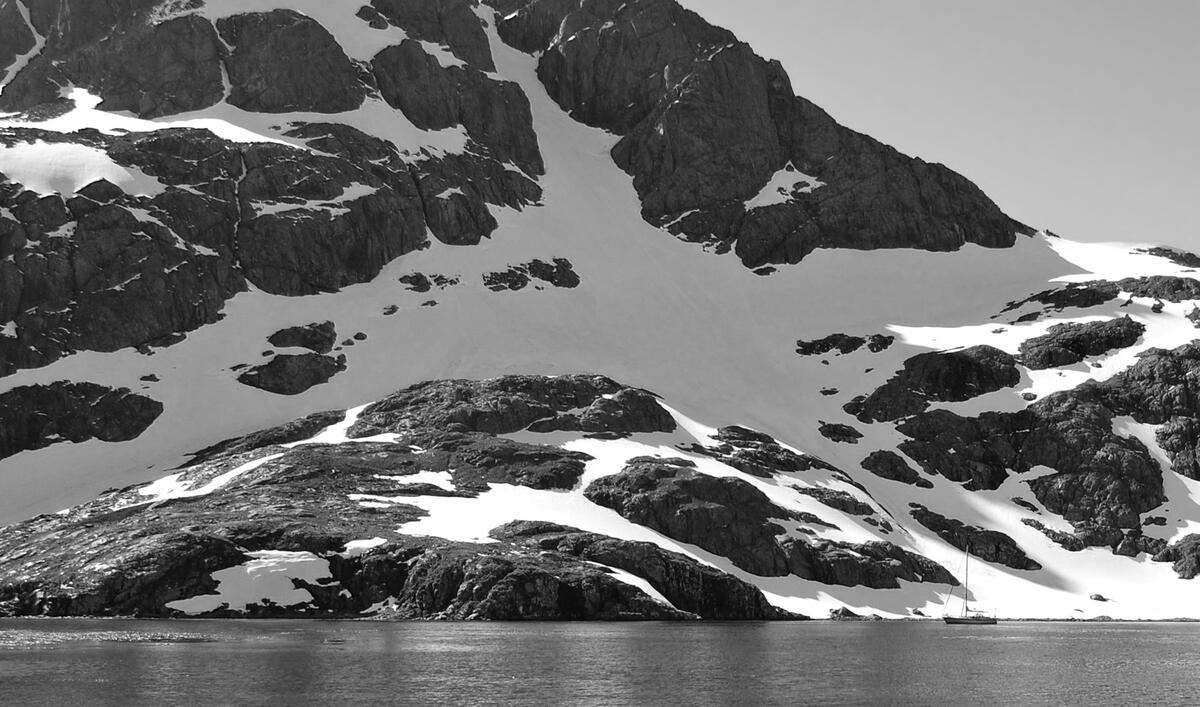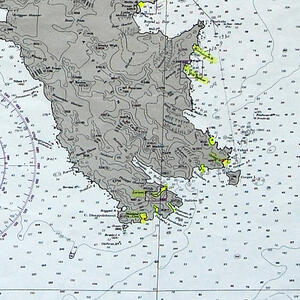
Headed to the south, Cooper Bay was one of the first, albeit more modest, wildlife attractions on our itinerary.
Farther still, at the very south-eastern tip of South Georgia is found Drygalski Fjord, an inlet of 7 NM intrusion, and the Larsen Harbour branch thereof. These sharp and rugged fjords are shaped by mountains of bare volcanic rock, contrasted only by snow and ice, and present possibly both the most beautiful and forbidding visage of the island.
Frank Hurley, photographer for Shackleton, was apparently as impressed by the sights here as anyone else. He described Drygalski as the “most beautiful and exceeding all in grandeur even that of Milford Sound [New Zealand]”. Drygalski is also the likely site of the first visit to South Georgia, by Englishman Anthony de la Roché in 1675. Blasted away from Cape Horn by a storm out into the South Atlantic, la Roché anchored his ship for a fortnight but remained contained onboard on account of the weather.
Cooper Bay and Drygalski Fjord
The Twitcher and Herz Glaciers spill from inland, millions of tonnes of ice accumulated by the mountains to the interior and excreted back to the ocean by route of invisible valley.
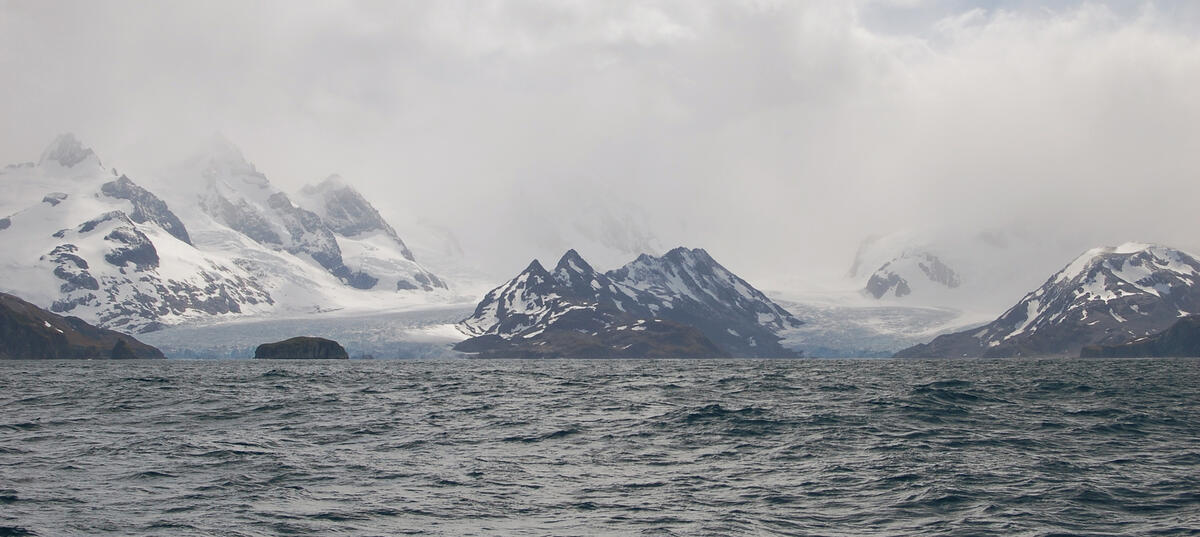
Cooper Bay is described by Peter as an evil and precarious anchorage. In South Georgia, like much of the high latitudes, the shorelines are rocky and unforgiving, the bottoms are of poor holding and usually covered in kelp, and anchoring is a stressful business. The surge to be managed is evident on the rocks and beaches.
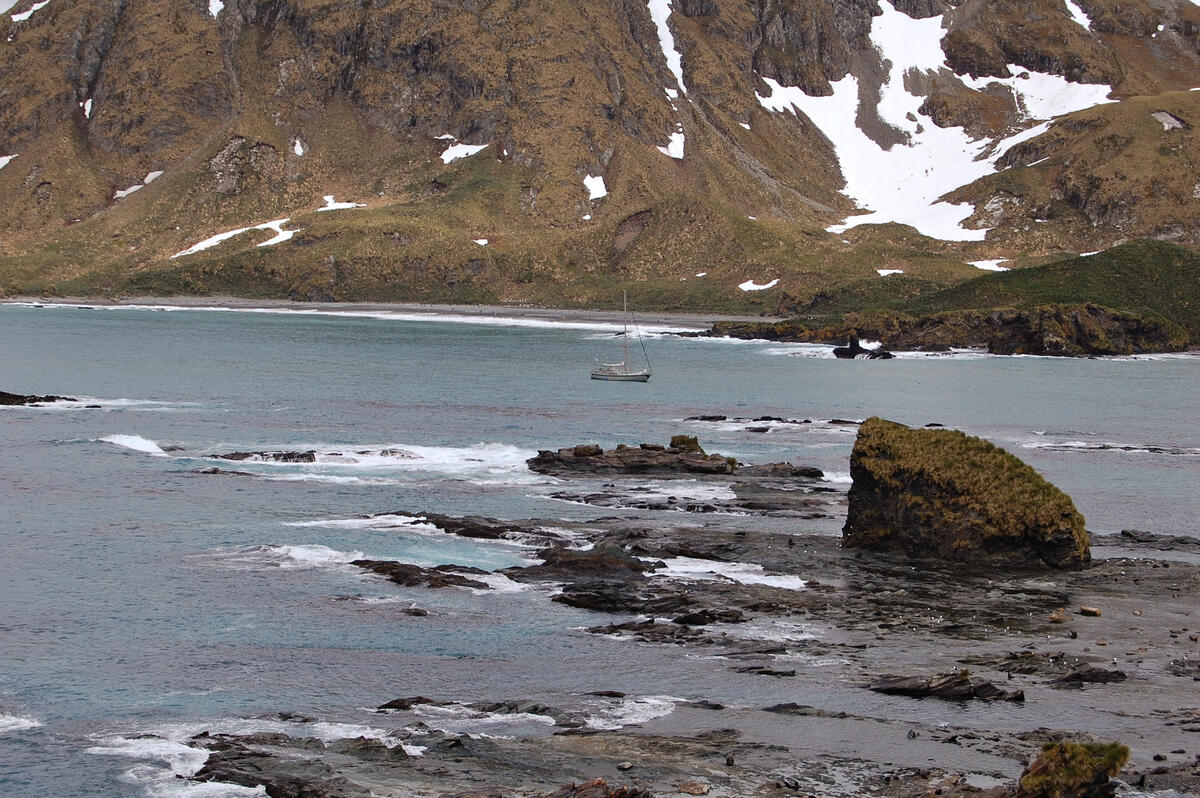
Tussock covers the navigable terrain, and tends to hide fur seals. Bodgers again required, we hiked north up the coast in search of our destination.
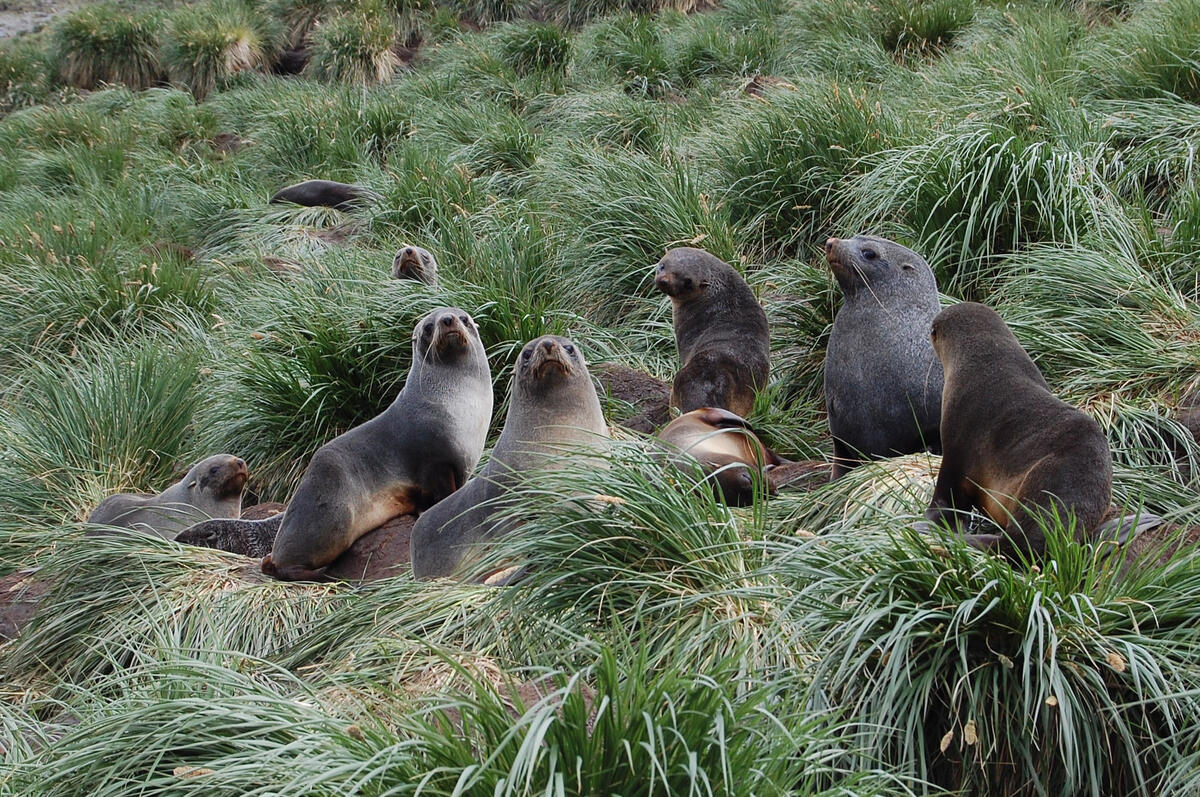
The tussock grows everywhere it has the opportunity, and the beaches are dotted with seals.
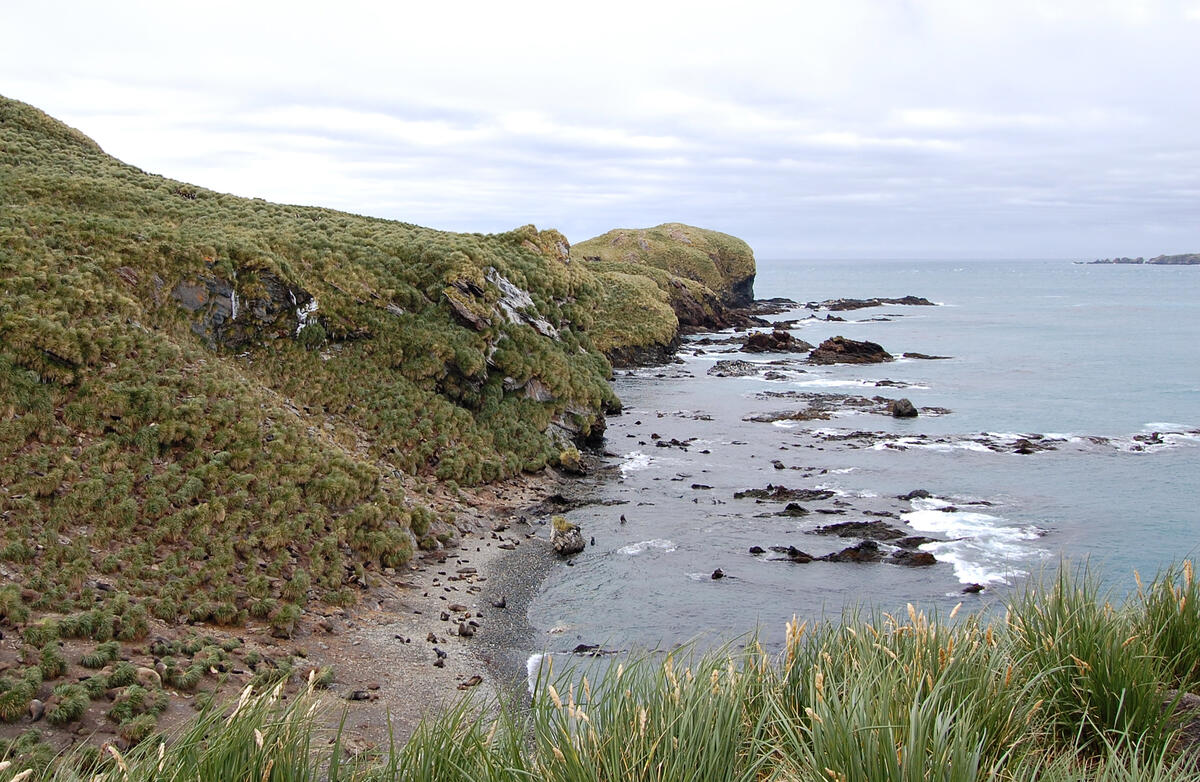
This is what we were looking for: macaroni penguins. They eluded us in the Antarctic Peninsula.
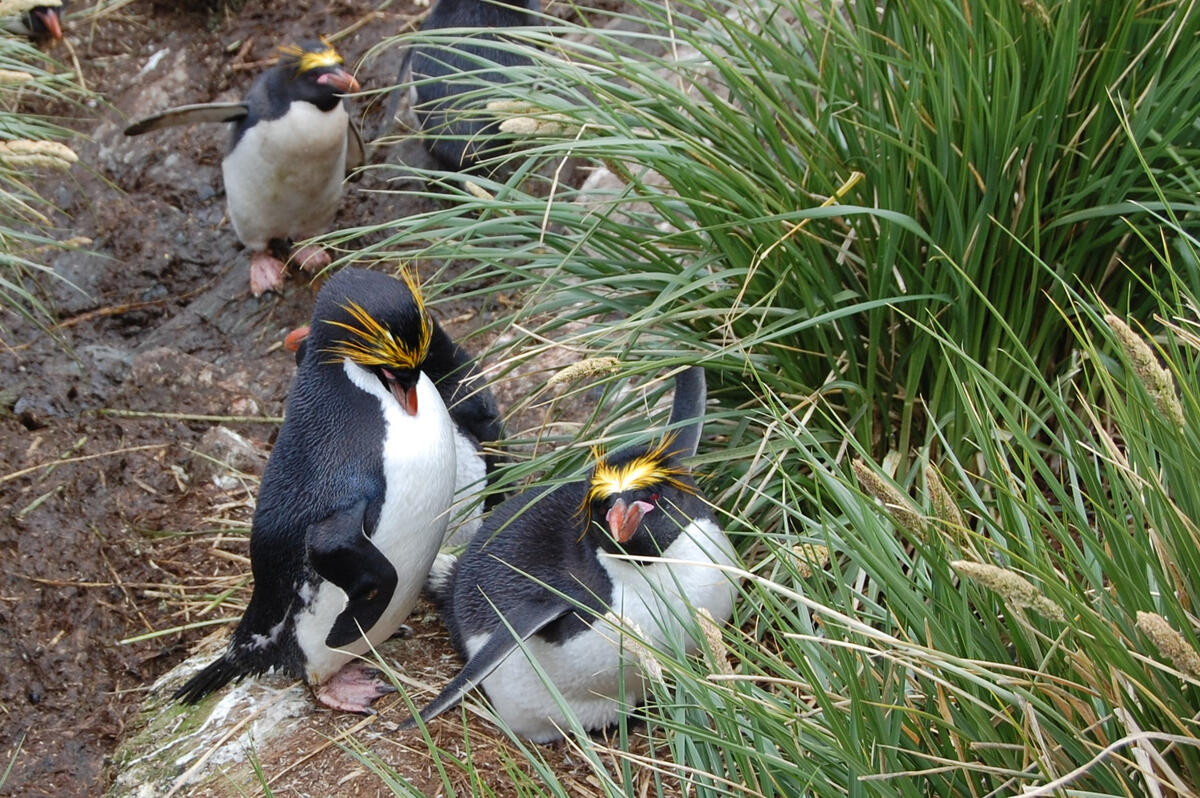
Macaronis, so named in an obvious reference to the epicene 18th century fashion on account of their yellow tassels, make themselves very photogenic. There are hundreds of pairs here.
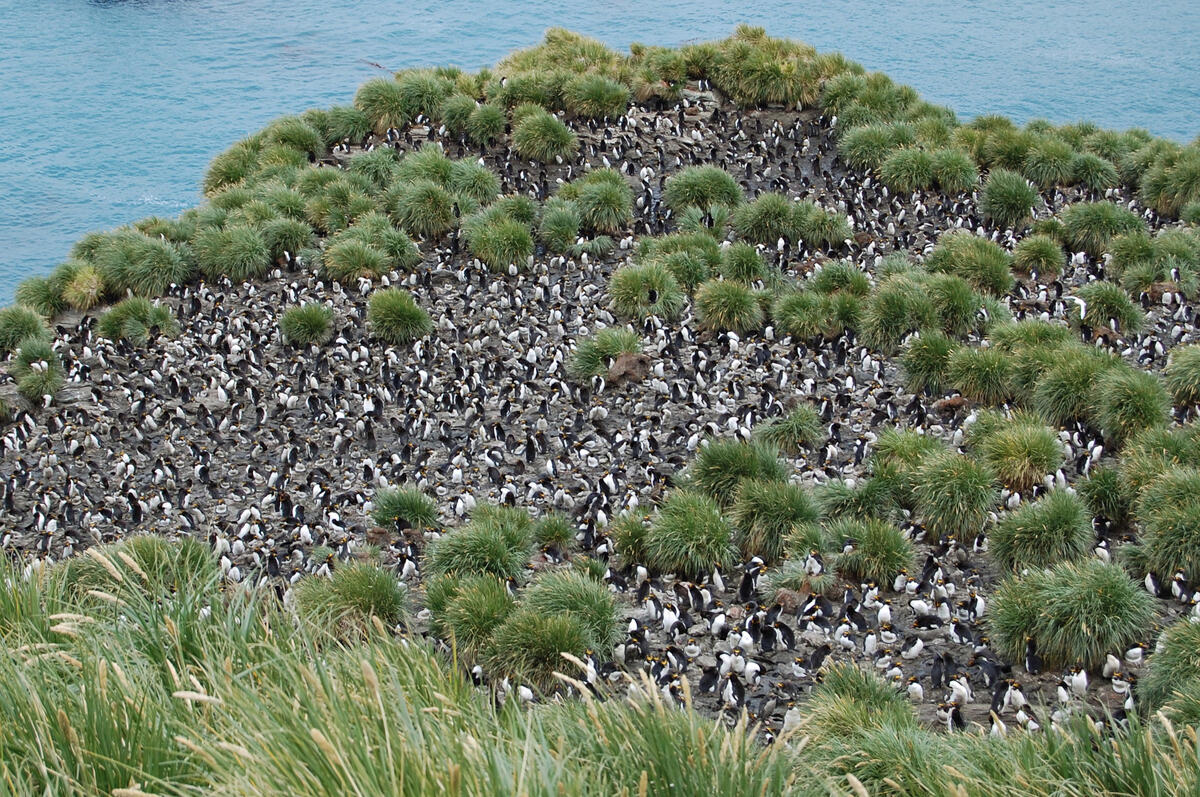
The weather changes fast in these regions, and rolling clouds marching rapidly off the slopes were our cue to get back to the boat.
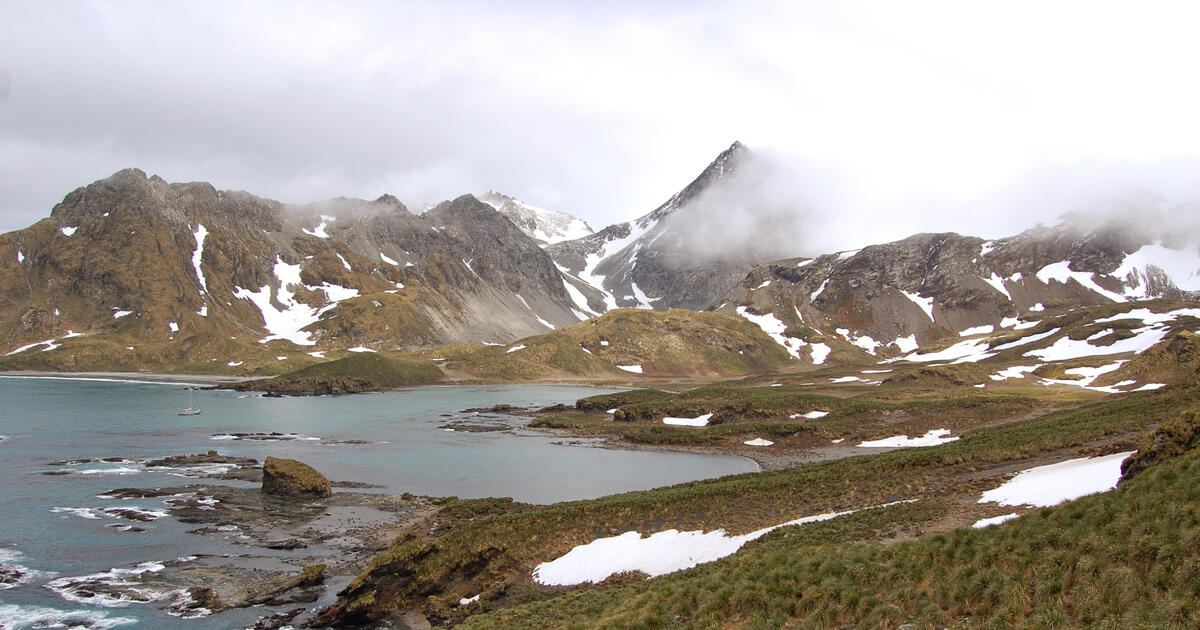
Finally at the very south-eastern tip of South Georgia, we approached Drygalski Fjord with some trepidation. Farther to the south lies nothing until the ice of Antarctica.
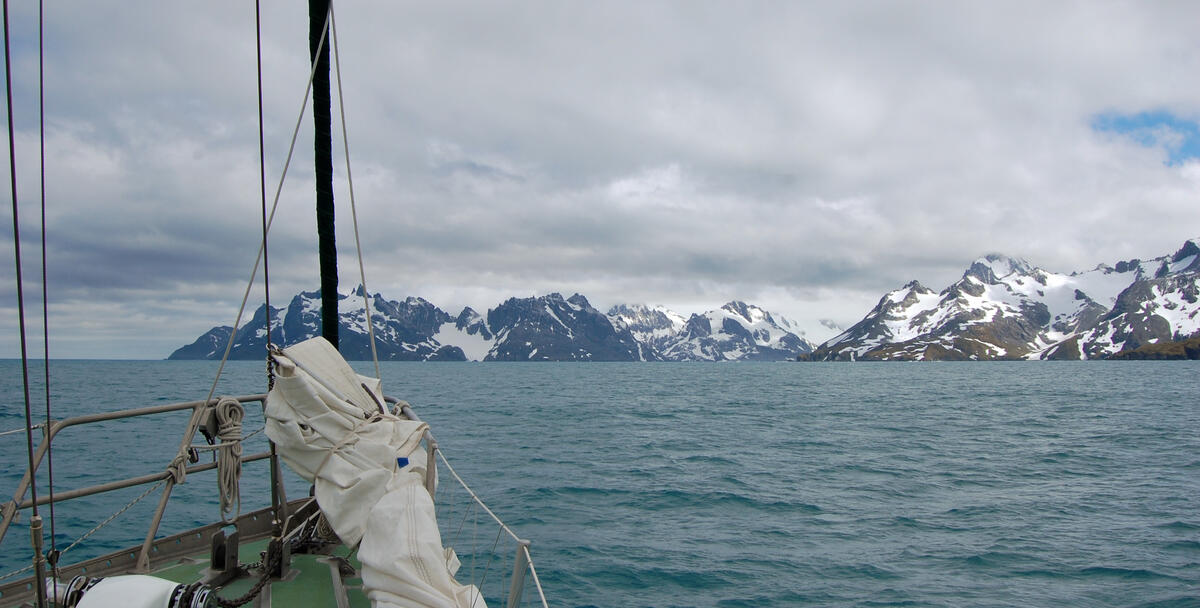
The Drygalski Mountains form this extension of the island – steep, high, savage and raw. The clouds occasionally part, on a nice day, to fully expose the mountain tops.
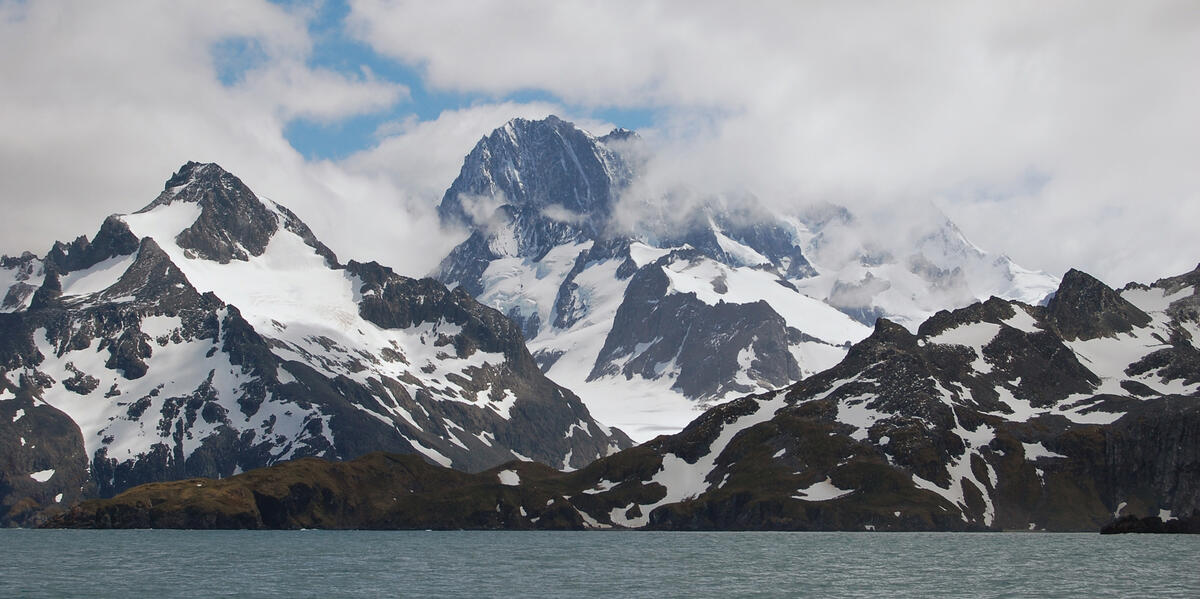
The fjord mouth is revealed as the point is rounded. Anthony de la Roché is believed to have visited here in 1675, the accidental explorer first to discover South Georgia. Not knowing where he was after being blown far east, he anchored his damaged ship somewhere in the area.
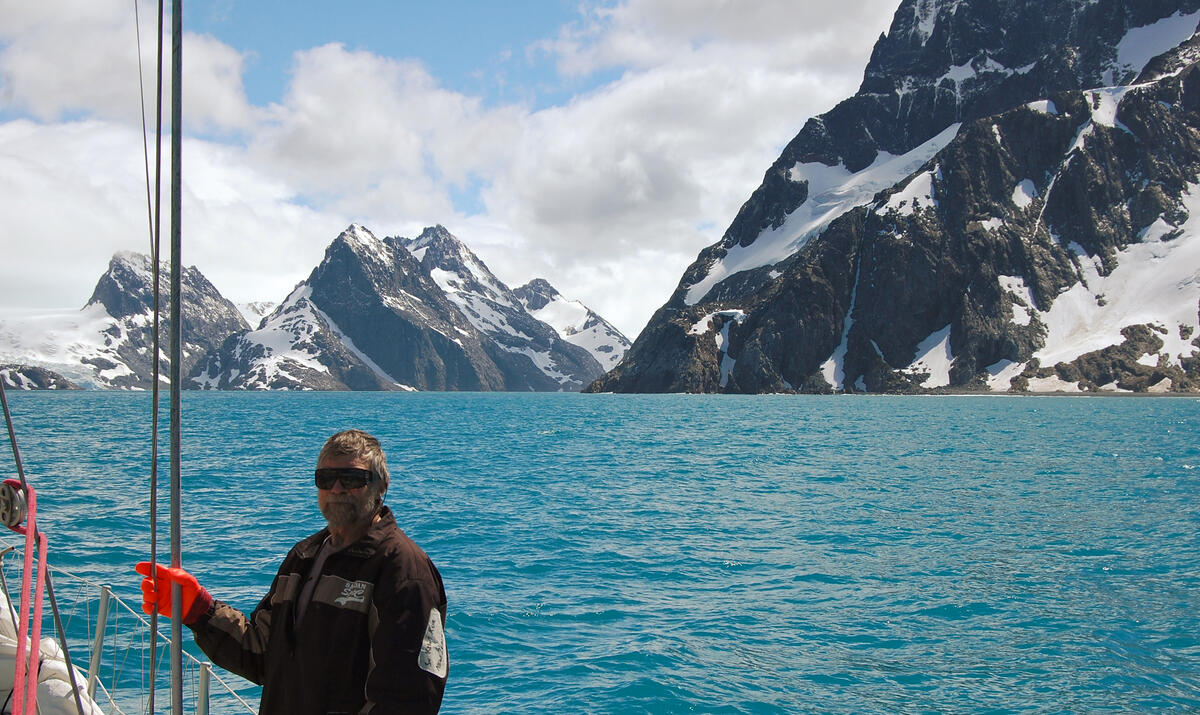
A Spanish captain wrote an account of la Roché’s adventure fifteen years later, telling how…
… it would be much if they escaped with Life, particularly as they had no Knowledge or Intimation of the Land which they now began to see toward the East which making and using all endeavours to get near it, they found a Bay, in which they anchored close to a Point or Cape which stretches out to the Southeast with 28. 30. and 40. fathoms Sand and Rock, in which situation they had sight of some Snow Mountains near the Coast, with much bad Weather …
For our part, Larsen Harbour was our anchorage of choice. The terrain, extending both horizontally and vertically in rough texture, is incredible.
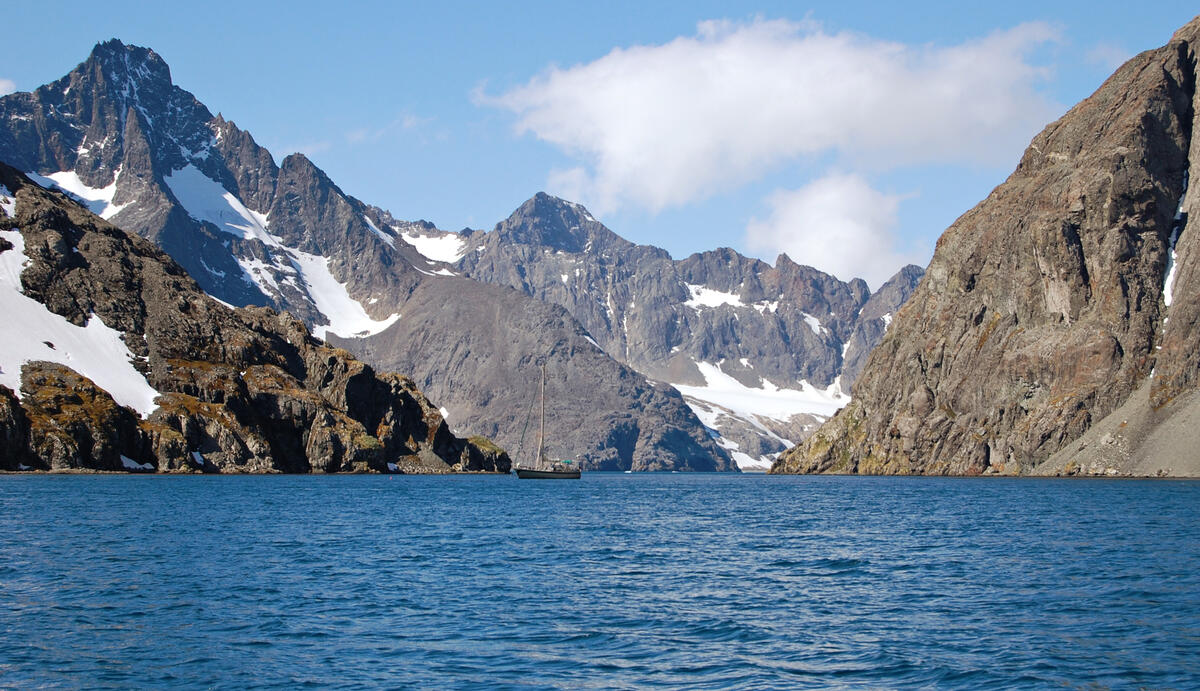
Larsen is very well enclosed by the mountains, an inlet about two and a half miles in length. The cliff sides dwarf the boat.
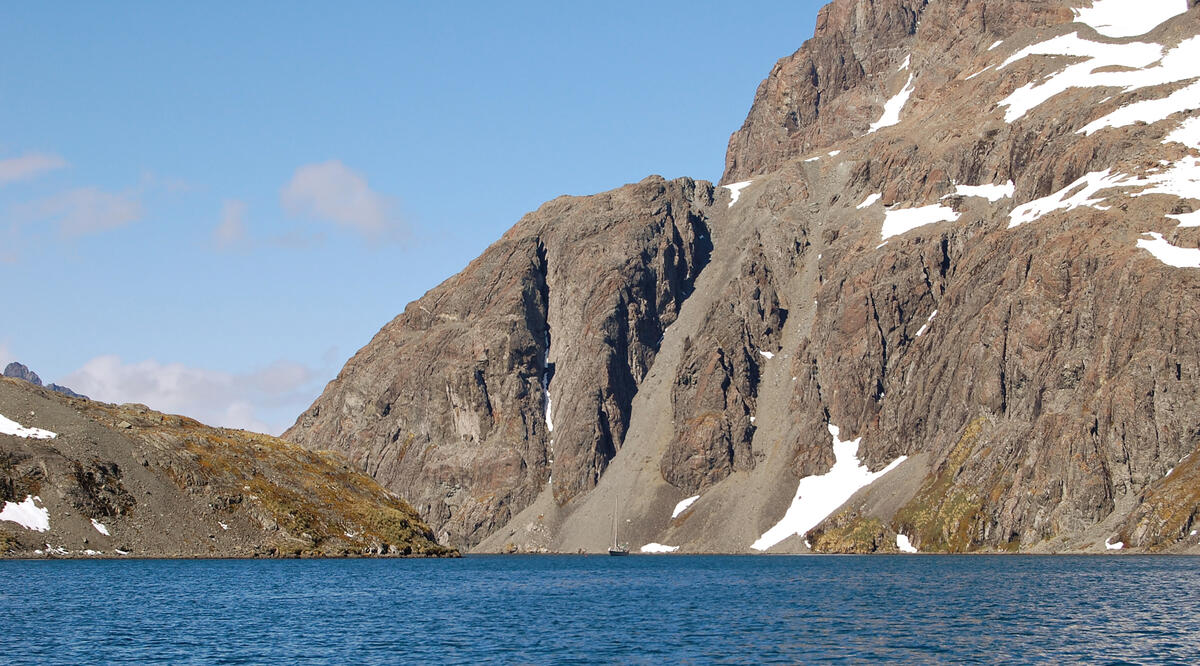
The inlet is headed by a saddle of ice.
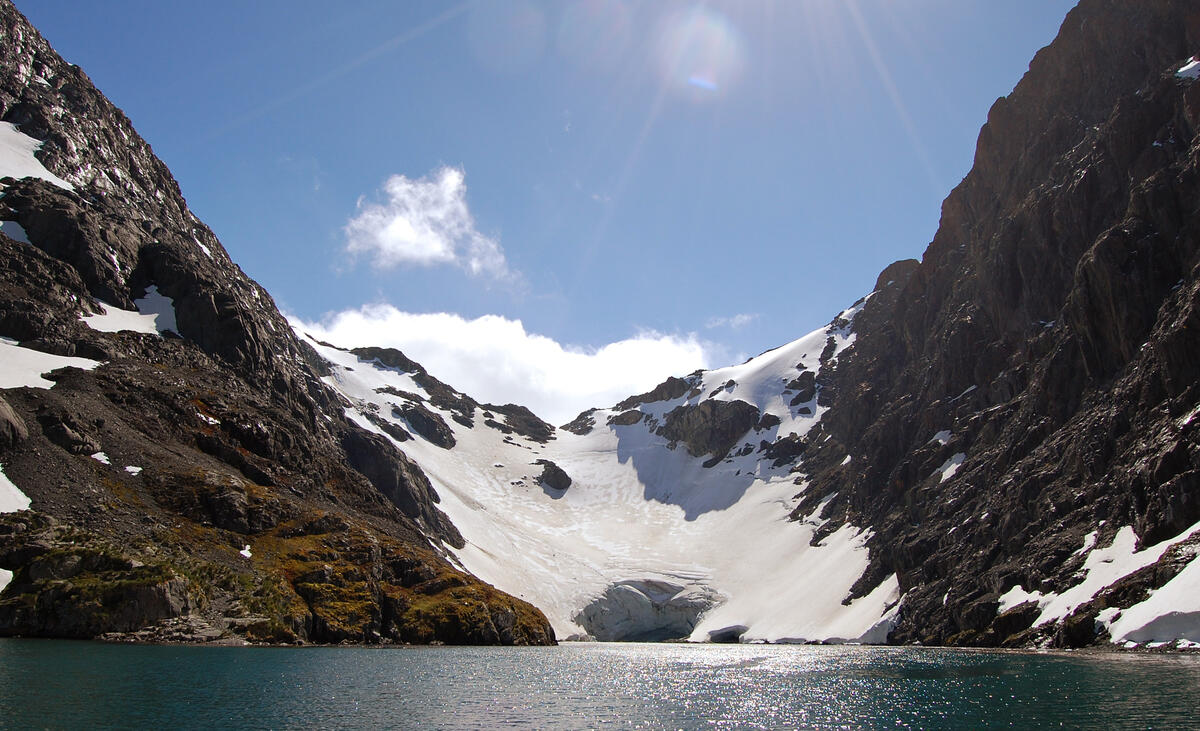
We anchored Kiwi Roa on the moraine, marked chiefly by the presence of the kelp in these photos, where the only holding in a reasonable depth may be found. The inlet serves as a wind funnel in a north-westerly, but otherwise is secure enough. An arduous climb – a hike on all fours, a scrabble – is rewarded with suitable scenes.
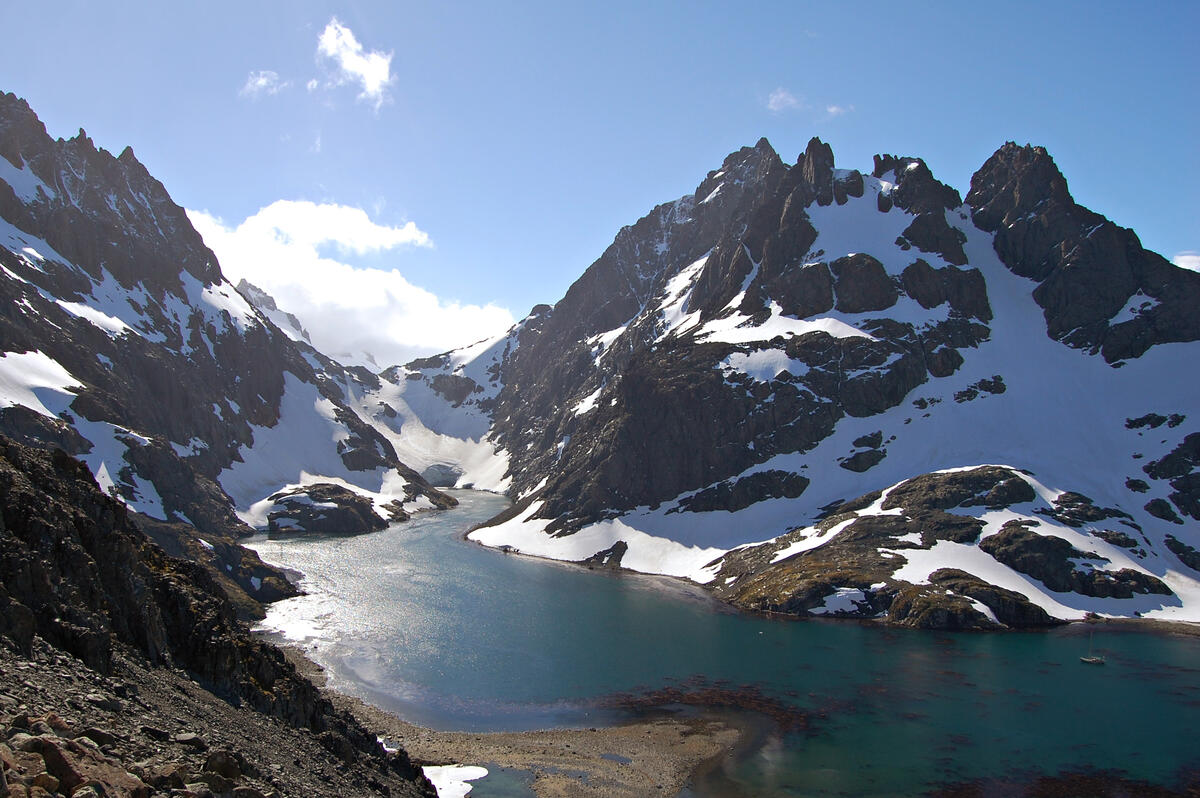
In a bit of grim irony conspired to by glacial water and sunlight, the water looks tropical. The interior mountain ranges loom from the distance – no welcoming land for desperate sailors. Had la Roché landed and explored this alien land of snow and ice, we doubt he would have stayed any longer than he did.
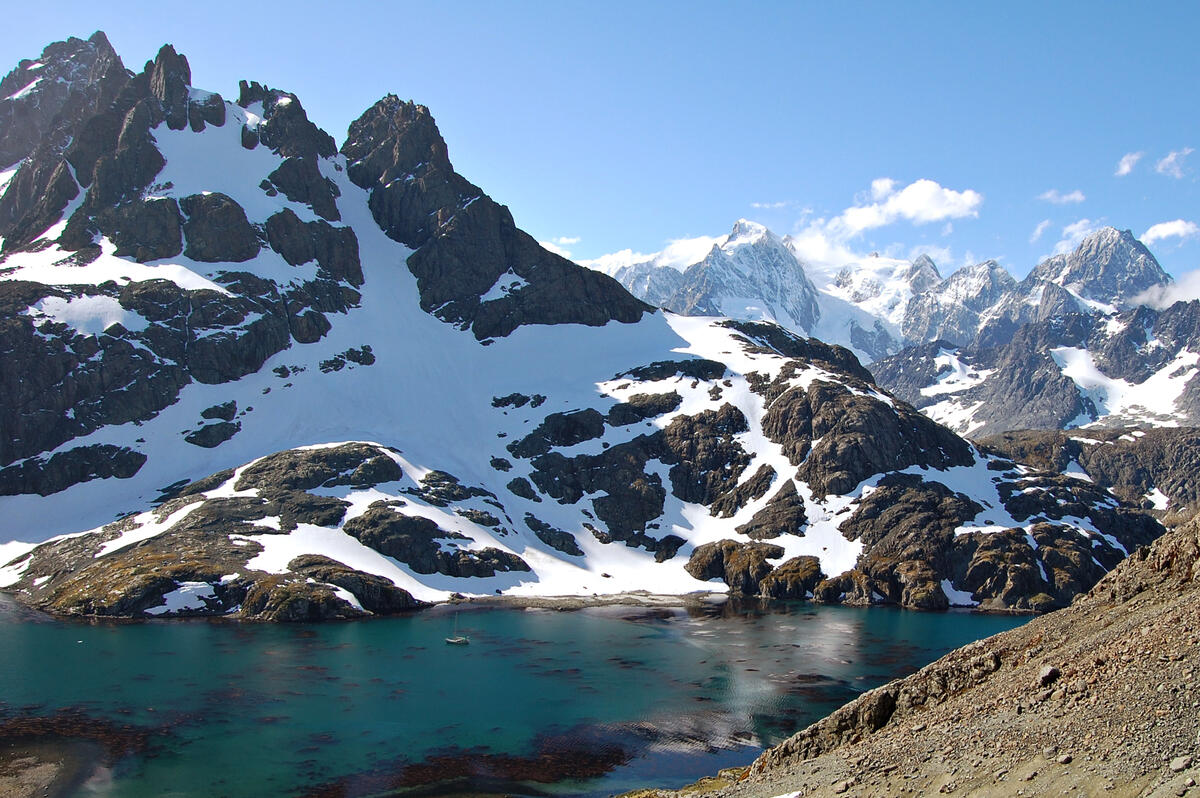
The scale is difficult to convey. Although not quite on par with the Antarctic continent, the difference is the relative and perhaps deceptive ease in which it is possible to get up close to the terrain.
